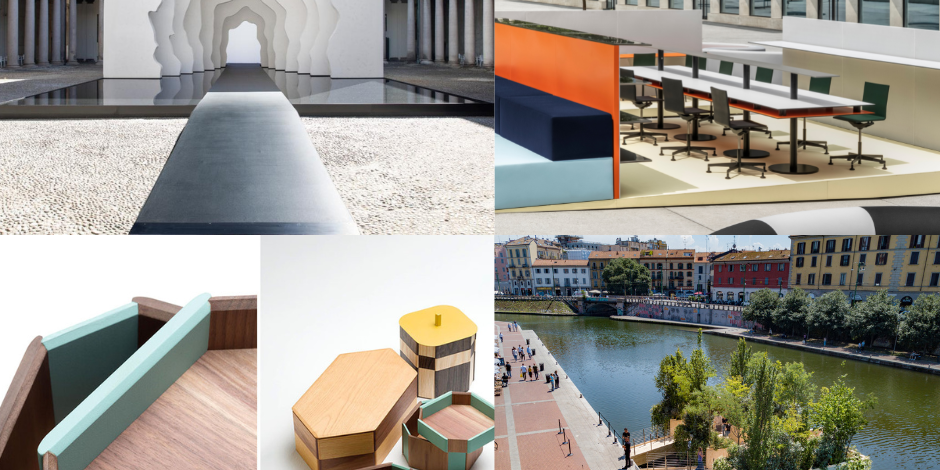Flash of design trends.
Fuori Salone del Mobile and Milan Design Week 22-23
Once a year Milan becomes the undisputed capital of design. The imprint that each edition brings is the inspiration of trends and tendencies (furniture, lighting, fabrics, surfaces, new technologies, craftsmanship tradition…) in interior and exterior spaces of the home, commercial, educational or health spaces, offices, hotels and all kinds of public environments, which help professionals to make their proposals evolve.
In the last edition in June, despite the pandemic ups and downs, 262,000 visitors passed through the trade fair, Fiera RHO, and 400,000 visitors in total in the city, from 173 countries, according to Corriere della Sera.
The decisive attraction of all the events that radiate from every corner of Milan and its periphery is once again confirmed. With a notable increase in the number of people attending the events, exhibitions and shows of the so-called Fuori Salone. The whole city radiates design, creativity and innovation come together in an unstoppable equation as a reference in recent years, despite viral avatars and global war conflicts.
We draw the most decisive general conclusions, after the exhaustive circuit of trends, by Fuori Salone and Milano Design Week, carried out for the Silestone Institute.
A selection of the most striking projects and images, those that break new ground and leave a creative mark on interior design.
Continuous trends + connected trends = trends that make an inspirational mark:
- The STONES of the world in everyday life
INSPIRATIONAL FOOTPRINT:
The human need to be surrounded by nature implies a connection with mother earth, with mountains and rocks that show their natural textures and tones.
EXEMPLARY REFERENCES:
Alcova Space
Design by OMA, Ellen van Loon, Sabine Marcelis
Solid Nature Project
The architectural firm OMA developed one of the most spectacular projects at this year’s Salone di Milano, dubbed the “door of design”. A process of in-depth research into the limits and horizons of natural stone. OMA partner Ellen van Loon and designer Sabine Marcelis led the project.
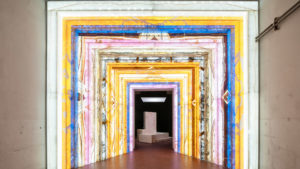
Design by OMA, Ellen van Loon, Sabine Marcelis. Solid Nature Project
Palazzo Senato Space,
Design Daniel Arsham
DEKTON Project with Divided Layers for Kohle
It has been the FuoriSalone 22 Award and the most exposed space in social networks. A spectacular arch of colossal dimensions with a walkway from inside the inner courtyard of the Senate Palace. The American artist and designer, Daniel Arsam played with the lighting and with the volumes of successive layers of Kohler natural stone that enveloped the visitor.
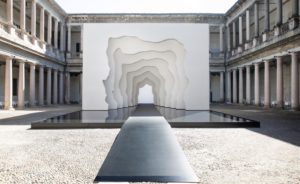
Design Daniel Arsham
DEKTON Project with Divided Layers for Kohle
-
- BOSQUES and orchards are expanding in the city.
INSPIRATIONAL FOOTPRINT:
The proliferation of ephemeral gardens installed in every corner of the cities, end up staying continuously, gardens on rooftops, floating cores in rivers and fountains and vertical assemblies of vegetation. They are new natural dimensions, necessary in the cities, neuralgic points that refresh and bring the passers-by closer to a greater natural perception and, each time, with more sophisticated integrated designs.
EXEMPLARY REFERENCES:
Naviglio Pavese Space, Darsena Milano
Design Stefano Boeri Architect
Floating Forest Project
A green floating island Floating Forest, a natural lung, in the canals of Milan. Always in line with the design of the architect, Stefano Boeri -Boeri Interiors-, also President of the Triennale Museum, who eight years ago erected one of the most powerful architectural messages, the “BOSCO VERTICALE”.
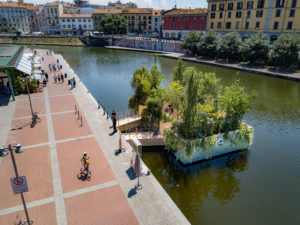
Design Stefano Boeri Architect
Floating Forest Project
Estudio Piuarch Attic Space
Design Francesco Fresa
Organic vegetable garden and beekeeping project
Environmental commitment. A forest with medicinal plants and a species recovery project, continued throughout the year, in the heart of Brera, the historic area of Milan. A project designed by one of the most renowned architects in Italy, Francesco Fresa, founding partner of the Piuarch studio. His architectural work includes fashion industry factories linked to natural spaces.

Design Francesco Fresa
Organic vegetable garden and beekeeping project
-
- Kitchens and offices in the open air
INSPIRATIONAL FOOTPRINT:
The outdoors as a natural living space has become a widespread aspiration. The desire to be able to cook or work outdoors is conditioned by new functional elements, designs that make it possible to avoid being cold or hot, to avoid the rain or the wear and tear of materials. A revolution that includes a creativity that gives a complete turn to the existing.
EXEMPLARY REFERENCES:
Feltrinelli Foundation Space
Design OMA Architects for UNIFOR
External offices project
The worker’s freedom of choice in companies is transferred to the design of each element used in the office. Comfort, lightness and flexibility are the premises of these designs that include color as another way to play with and personalize spaces.
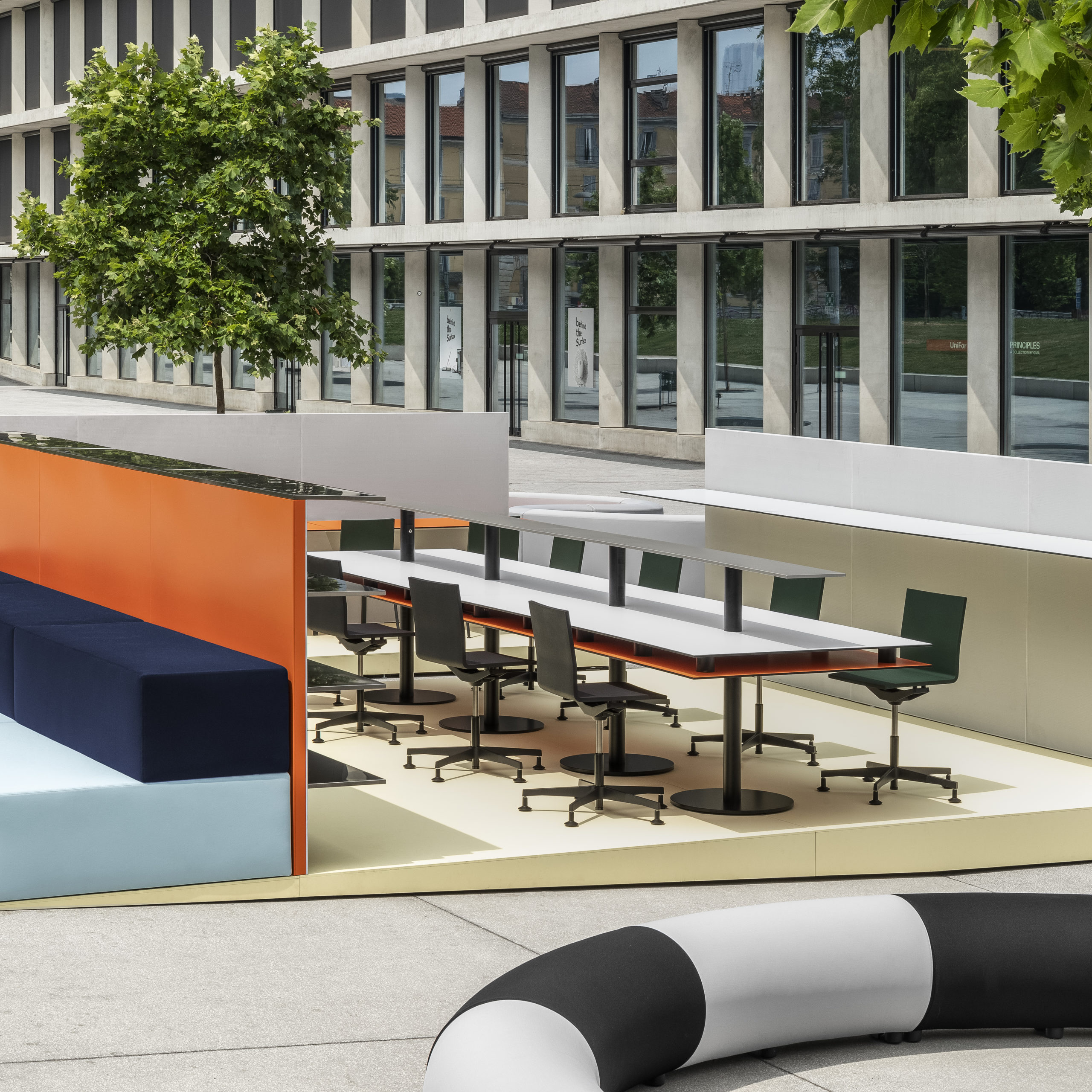
Design OMA Architects for UNIFOR
External offices project
Alcova Space
Design Chmara.Rosinke
Nomadic outdoor kitchens
The colorful outdoor kitchens of Chmara.Rosinke in Alcova show that the trend of nomadic kitchens is becoming more and more widespread. Changes are immersed in our lives and want to be represented in the home. Wheels and modularity are allies in these new systems. The interior and exterior materials facilitate this mobility towards the exterior, regardless of the inclemency of the weather.
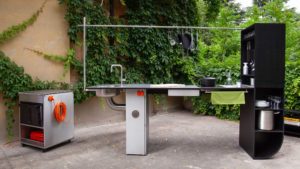
Design Chmara.Rosinke. Nomadic outdoor kitchens
-
- Immersive LIGHT
INSPIRATIONAL FOOTPRINT:
Lighting has become one of the main keys to the transformation of spaces, whether temporary or permanent. It is an axis in permanent evolution, from the innovation of technology or from the poetry of light in contrast with shadows. Lighting influences the emotions, and the human sensations that are experienced in each of the human being’s drives.
EXEMPLARY REFERENCES:
Rossana Orlandi Gallery Space
Design Estudio Mayice
No Title Lamps Project
Poetry is immersed in each piece of the Spanish duo of architects and designers Mayice. One more year at the mythical Rossana Orlandi gallery, they launched their particular look at light. The integral transparency of the new No Title pieces generates airy and light atmospheres. They are suspended rays of light that reflect warm and sensory environments. Circular tubular shapes, in a single piece of handcrafted glass. Innovation and traditional craftsmanship are the constants of a work that always demonstrates solidity and fragility at the same time.
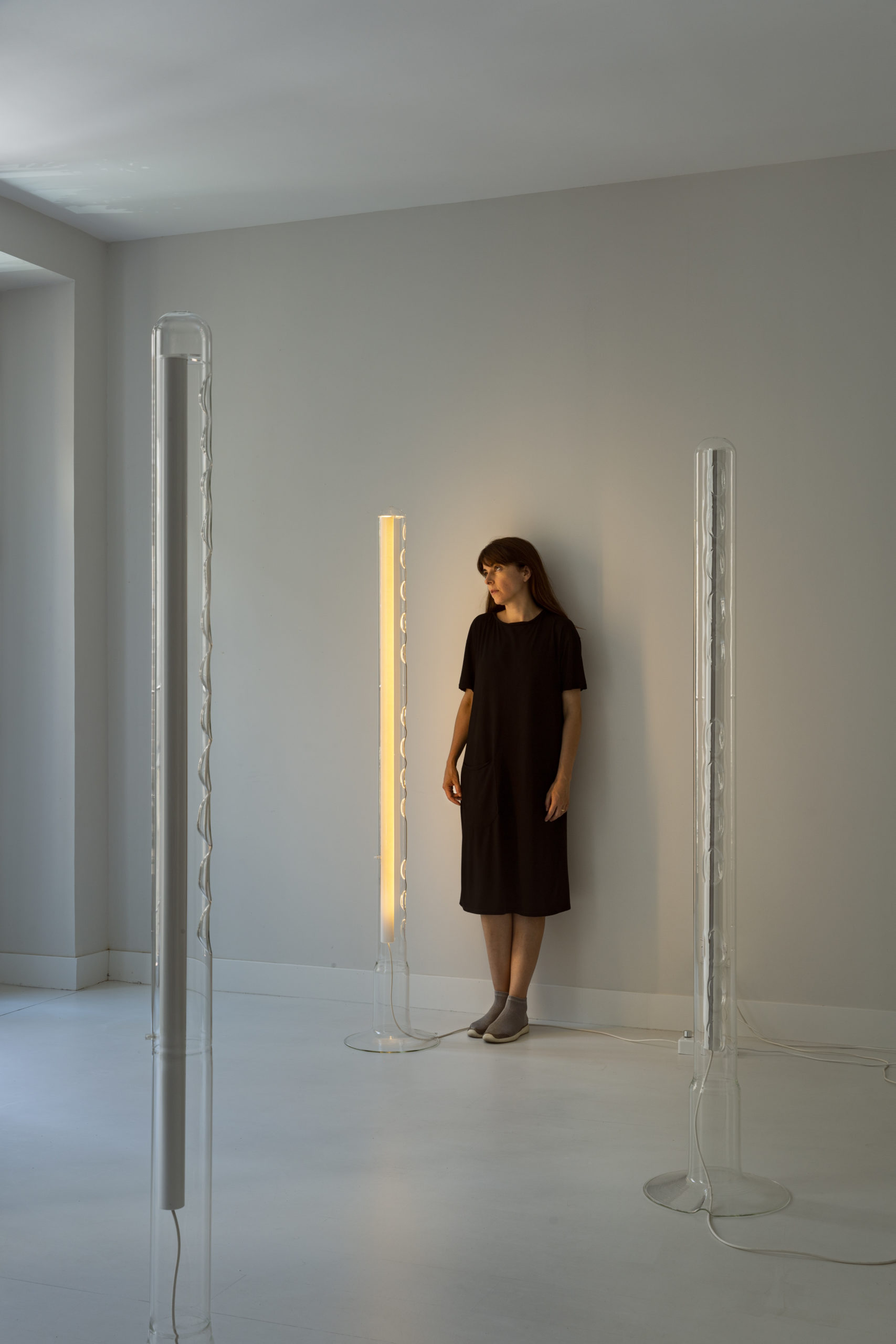
Design Estudio Mayice. No Title Lamps Project
Nilufar Depot Space
Design Andrés Reisinger
Too Much, Too Soon!
Andrés Reisinger presented this year at Nilufar Depot rotund luminaires in an immersive environment, he designed an installation with one of his fetish colors, pink and all its possible gradations. Along with the play of distorted mirrors.
Metaverse and reality blend in this designer’s creative vision of the most desired digital spaces. From his surreal spaces, design editors decide to bring to reality his delusions, furniture, lighting and spaces, expand all over the world.
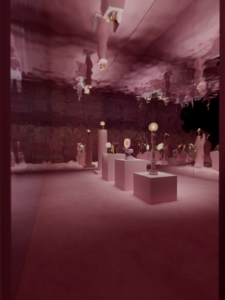
Design Andrés Reisinger. Too Much, Too Soon!
-
- New technological CRAFTS
INSPIRATIONAL FOOTPRINT:
Architecture and interior design with new craft technologies.
Craftsmanship evolves through the involvement of designers and current creators, the contribution of new approaches adapt the work of manual excellence to the new ways of living and the need for rurality, the return to the countryside or the development of natural projects in cities, infallible duos designer/craftsman, tradition/innovation, natural materials/technology.
EXEMPLARY REFERENCES:
Palazzo Litta Space
Design Eli Gutiérrez and Antonio Serrano (MAD LAB)
Exhibition project Doppia Firma
Both the hands, as well as the ability to design and innovate, take on a similar protagonism in the Michelangelo Foundation’s Doppia Firma project. This year the Palazzo Litta in Milan was filled with projects developed all over the world to demonstrate this combination of progress, from tradition to the future of manufacturing with artisan sensitivity and design impulse.
The pieces, complements for the home, made of wood, by designer Eli Gutiérrez, worked harmoniously with the excellent craftsman Antonio Serrano, founder and promoter of the MAD LAB publishing house, stand out.
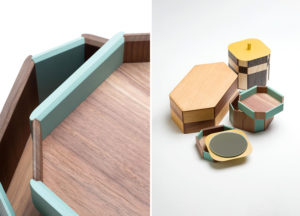
Design Eli Gutiérrez and Antonio Serrano (MAD LAB). Exhibition project Doppia Firma
Espacio Fondazione Feltrinelli
Diseñador Francesco Faccin
Proyecto “Again, From The Earth’s Foundation” Korea Craft & Design Foundation.
Grandes diseñadores y arquitectos italianos, Michele De Lucchi, Mario Trimarchi y Francesco Faccin, han trabajado con los mejores artesanos coreanos. Un profundo estudio del contexto natural y de la cultura de cada artesano y su lugar de desarrollo, ha precedido cada diseño y cada pormenorizada ejecución.
Materiales crudos, sentido del humor y del amor por el ámbito rural, rodean las piezas diseñadas por Francesco Faccin junto con el artesano Hur Sung-ja para la muestra.
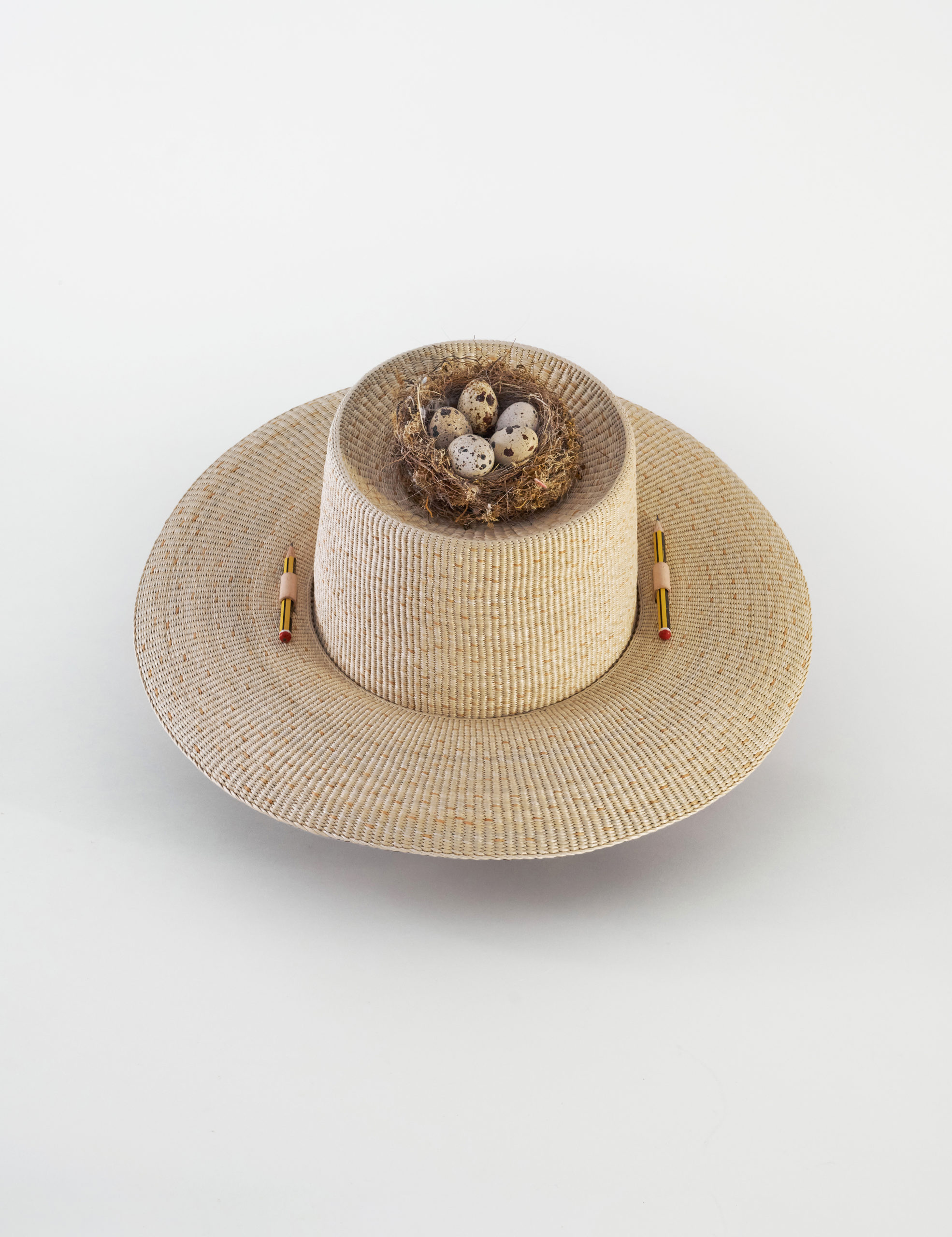
Diseñador Francesco Faccin
Proyecto “Again, From The Earth’s Foundation” Korea Craft & Design Foundation.
Research and texts by Marisa Santamaría
